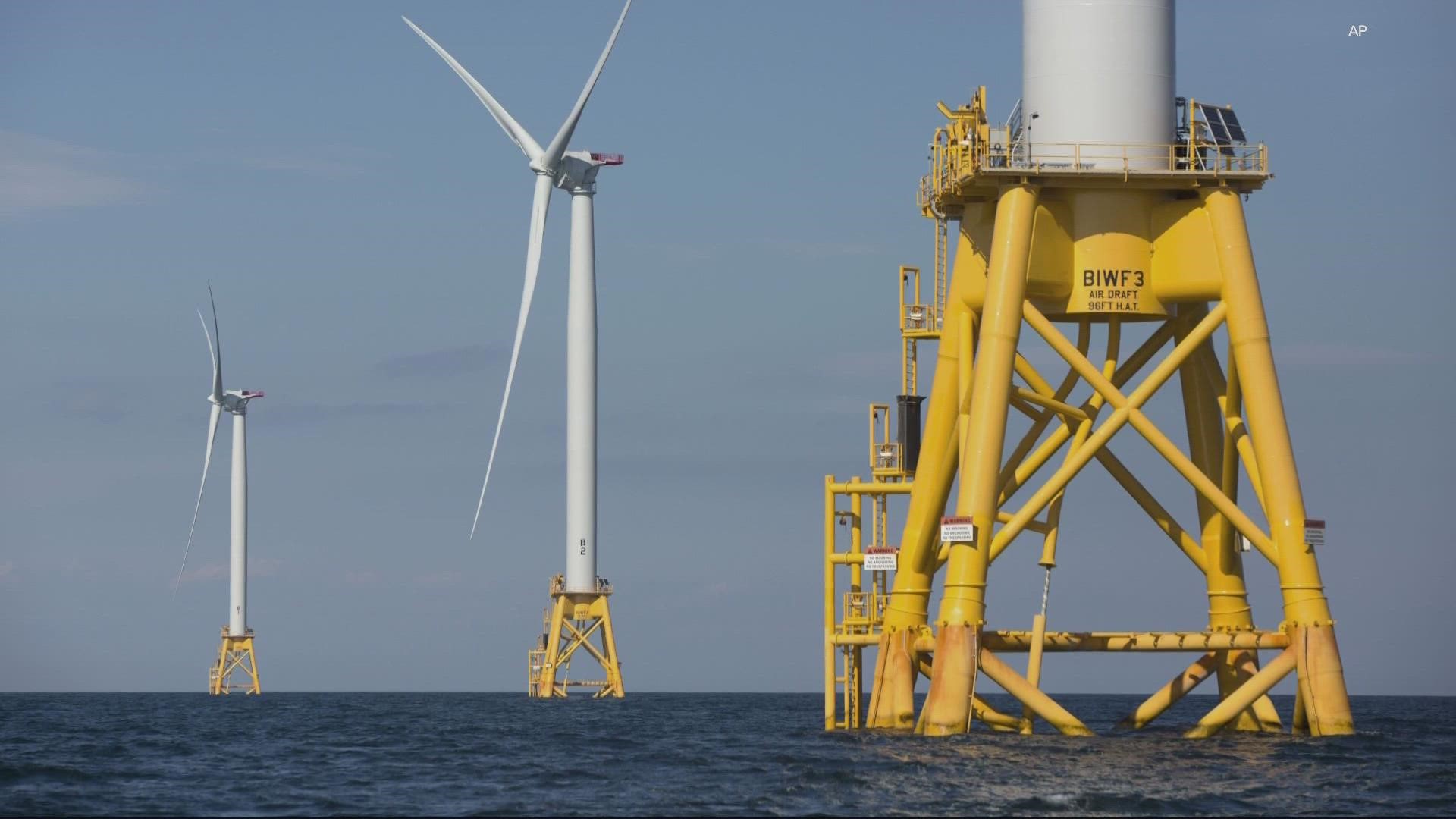PORTLAND, Ore. — The Biden administration on Thursday announced plans to develop floating platforms off the Oregon coast that could create wind-generated electricity to power millions of homes.
The administration is looking to create enough energy with the floating platform technology that generates up to 15 gigawatts of power, enough to power 5 million homes by 2035.
But it's that kind of goal, experts say is needed to push things forward, and make the Pacific Ocean a wind energy producer.
Biden’s team announced plans to support wind towers off the California and Oregon coasts.
The technology is already developed enough to be in use in European waters. And it will fit the Pacific Ocean where deep water doesn't allow towers attached to the ocean floor.
“It's around the corner in the context of a ten year process so we really do need to move,” said Bryson Robertson an Oregon State University associate professor and director of the Pacific Marine Energy Center.
“I think the Biden administration announcement really says, ‘look we're really committed to doing this, we're going to do this in the right way’. But if we go through the process there will be something at the end because otherwise you can't ask these companies to invest,” said Robertson.
Wind generated electricity is already being delivered by turbines attached to the seafloor; there are 6000 of them worldwide including on the U.S. East Coast.
The Pacific Ocean's time is coming with the floating platform technology, said Jason Busch with Pacific Ocean Energy Trust.
“The wind resource in northern California and Oregon is world class. If we can develop offshore wind projects we'll have a very high quality energy resource that will help us meet our state and regional carbon and energy goals, but it will also bring billions of dollars of investment as these projects are developed, of course along with the thousands of jobs that will be associated with this as well,” said Busch.
Robertson said the administration goals are big for the Pacific Ocean and worth making.
“If you want to inspire people you want to drive change, we need to be aggressive, we need to make big statements and we need to push the envelope, because the status quo won't get us to where we need to be in a timeline that's tractable in relationship with our climate change challenge," said Robertson.
Not everyone likes the idea of offshore wind turbines, the commercial fishing industry most notably, according to Busch. So working out differences is part of what needs to happen.
California is set to sign a couple of leases later this year, Busch said. Oregon is a few years behind but areas under consideration are off the coasts of Coos Bay and Brookings

